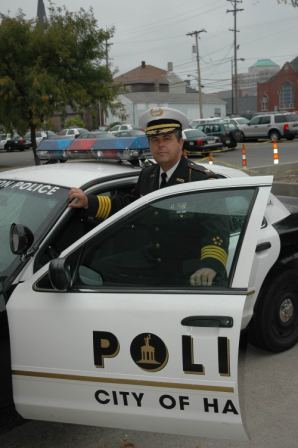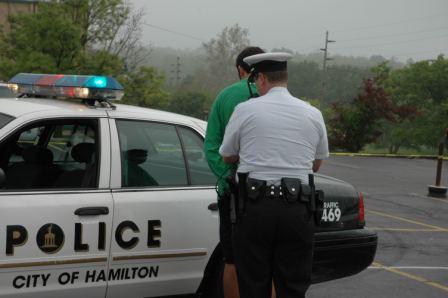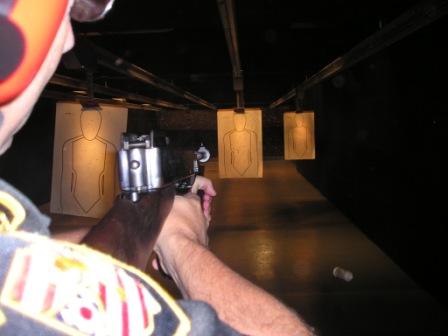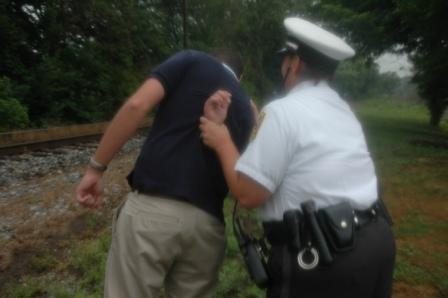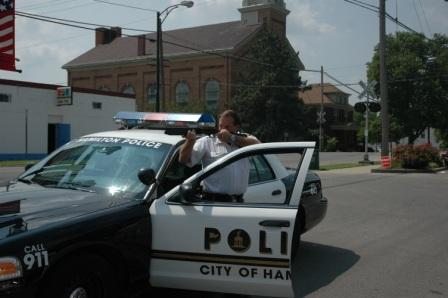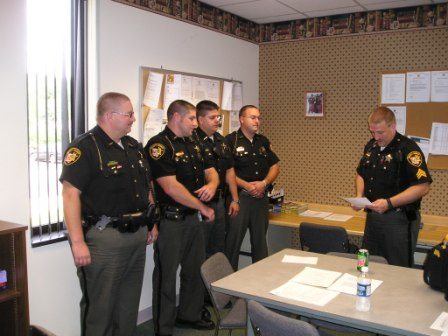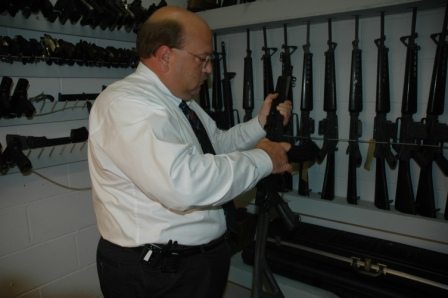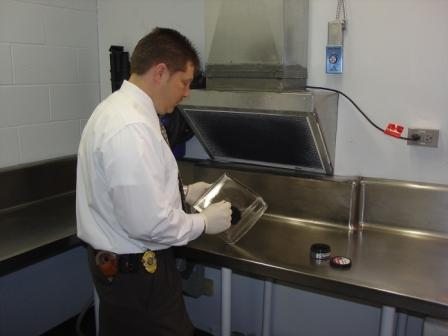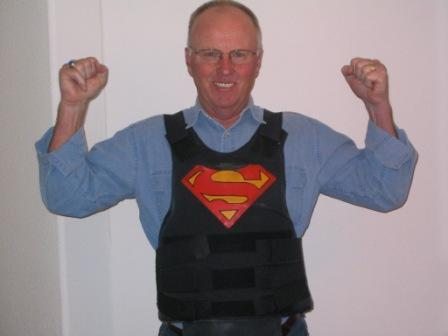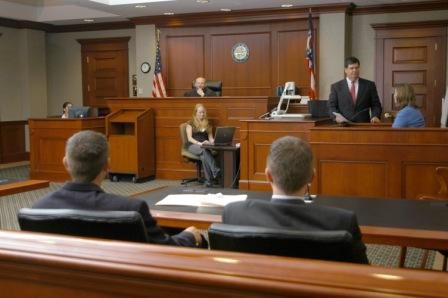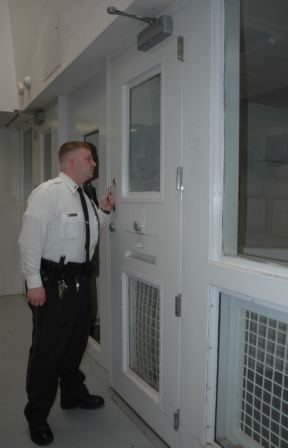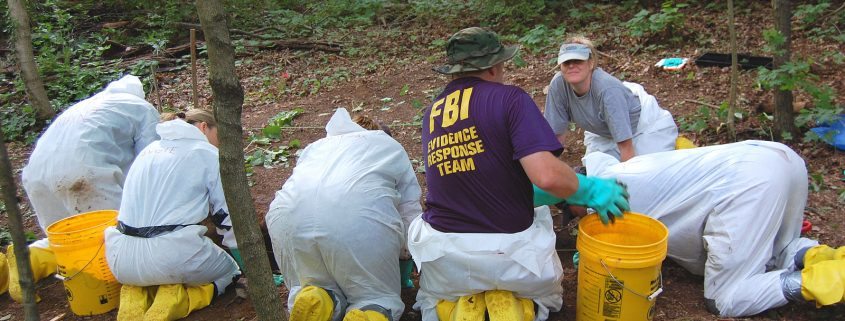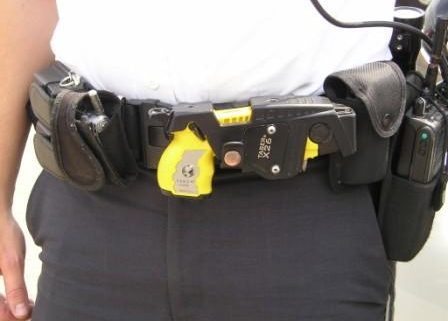Tasers were designed for use as an alternative to deadly force, and as a means of self-defense for officers. The use of these “non-lethal” weapons has been the focus of many investigations and news stories.
Can these brightly colored weapons cause death when used properly? Or, are officers using them when they shouldn’t. Is it possible that some officers are improperly trained to use Tasers?
Cops are trained repetitively so they’ll react instinctively in the field. The old saying is, “Cops will revert to their training when faced with life-threatening situations.” I agree. I’ve been there and it works, and that’s a good thing. But…
These officers are having a grand old time shooting their buddy during training exercises, but Is it really funny to shoot someone with a Taser? Does that humor transfer to the field, too? Does the “fun” aspect make some officers too quick on the draw? Hey, I’m just asking.
Here are a few news reports from the past two months alone. You be the judge.
The Associated Press – San Jose to pay $70K in Taser death settlement
12/17/2008 – SAN JOSE, Calif.-The city of San Jose will pay $70,000 to the family of a man who died after police used a Taser stun gun on him.
– SAN JOSE, Calif.-The city of San Jose will pay $70,000 to the family of a man who died after police used a Taser stun gun on him.
Officers said 38-year-old Jose Rios defied repeated attempts to subdue him when they responded to a domestic dispute in November 2005, prompting them to strike him with batons and shock him with Tasers.
Rios’ family claimed officers continued stunning him even after he was subdued. He later was pronounced dead at the hospital.
The coroner found that Rios died of a heart attack from a combination of the violent struggle, cocaine and the Taser.
San Jose officials agreed Tuesday to settle a federal lawsuit filed by Rios’ wife and son, the city’s first settlement over a death linked to Tasers. The weapons have come under increasing scrutiny for causing unintended deaths by law enforcement.

The Associated Press – Canada cops won’t face charges in Taser death case
12/12/2008 – Vancouver, British Columbia-Four federal police officers will not face charges for using a Taser gun on an agitated Polish traveler in a confrontation that ended with the man dying at a Canadian airport, prosecutors said Friday.
– Vancouver, British Columbia-Four federal police officers will not face charges for using a Taser gun on an agitated Polish traveler in a confrontation that ended with the man dying at a Canadian airport, prosecutors said Friday.
Prosecutor Stan Lowe said Robert Dziekanski was jolted five times by the Taser, but they said the cause of death was determined to be “sudden death following restraint” not directly caused by the stun gun.
Police said they used the Taser after Dziekanski began acting erratically at Vancouver’s airport in October 2007. Dziekanski, who spoke only Polish, apparently had become upset after waiting 10 hours at the airport for his mother, who was supposed to pick him up.
The man was hit three times with the Taser while standing and twice while he lay on the ground, still struggling with officers. He died on the floor a short while later.
A video shot by a bystander of Dziekanski dying was released several weeks later and was widely seen around the world on the Internet and TV, prompting public scrutiny of the weapon.
Twenty people in Canada have died after being shot with a stun gun, which the Royal Canadian Mounted Police have used more than 4,000 times since 2001. Canadian police forces consider stun guns a safer alternative to regular firearms.
The autopsy of Dziekanski found no drugs or alcohol in his system but showed signs of chronic alcoholism. Prosecutors said he may have been in the grips of alcohol withdrawal, dehydrated and hysterical. A pathologist speculated those factors caused delirium that may have contributed to his heart stopping, along with being hit by the Taser and being restrained.
The Associated Press – Man dies after police shoot him with Taser
12/21/2008 – SANTA ROSA (AP) – A man died Saturday after sheriff’s deputies shot him three times with a Taser stun gun, the Sonoma County Sheriff’s Office said.
– SANTA ROSA (AP) – A man died Saturday after sheriff’s deputies shot him three times with a Taser stun gun, the Sonoma County Sheriff’s Office said.
The department responded to a 911 call on Saturday from a woman who said she and her husband were being assaulted by their son.
“During the call, Mrs. Vaughn became increasingly frantic as she reported that Nathan was ‘destroying the house’ and ‘hitting his dad,’ ” the department said in a press release.
When deputies arrived, they were confronted by a combative, 39-year-old Nathan Vaughn. A deputy fired a Taser gun once at Vaughn, who they say continued to resist. The sheriff’s department says the deputy fired the stun gun twice more at Vaughn.
Authorities say after Vaughn was subdued, he showed signs of medical distress after being put in handcuffs. He was later pronounced dead at a hospital.
Authorities say that Vaughn had a long criminal history, and that he had served time in state prison previously for burglary.
Also, Vaughn had been cited and released on Friday after he called 911 repeatedly, telling deputies he would continue making the calls unless they arrested him.
The incident will be investigated by the Petaluma Police Department and members of the Sonoma County district attorney’s office.
The Associated Press – Vegas police officers sue makers of Taser weapons
11/23/2008 – LAS VEGAS-Two Las Vegas police officers who were seriously hurt after being shocked by Taser weapons in 2003 have sued its makers, saying the company failed to properly warn the department about the potential for injury.
– LAS VEGAS-Two Las Vegas police officers who were seriously hurt after being shocked by Taser weapons in 2003 have sued its makers, saying the company failed to properly warn the department about the potential for injury.
About a dozen officers around the country have made similar claims in suing Taser International Inc., questioning the company’s safety claims.
A third Las Vegas officer sued Taser but settled last year. Terms were not disclosed.
The Las Vegas police department has stopped a practice of shocking officers during training. During training, officers had been told that they couldn’t truly understand the weapon until they had been shocked by it.
“I have to tell you that I have a different understanding of that weapon than folks that have never been Tased,” said police detective Marcus Martin, the department’s lead Taser instructor. “But as training went on what started occurring is we started having officers getting hurt. So it was a policy decision that was made at the higher levels of the agency as to should we allow folks to be Tased and get hurt. It’s a cost-benefit analysis.”
According to court filings, the officers suing believe that Taser International understated to police the risks of being shocked.
Taser warns that its device can cause burns that can become infected. It also says people who are shocked by the weapons can suffer bone fractures, dislocations, ruptures and hernias. The company suggests that officers shocked during training lie face-down on the floor to minimize threats of falling and of being shocked in the eyes. Taser says the injury risk is comparable to athletic injuries.
In a suit filed earlier this month in U.S. District Court in Nevada, lawyers for officer Lisa Peterson said she suffered “life-changing injuries to her neck, jaw, shoulder and back” when she was shocked with a Taser during mandatory training.
Las Vegas police officers fired Tasers 432 times in the field in 2007.
The Associated Press – NC undercover officers use Taser on pallbearer
11/19/2008 – WILMINGTON, N.C.-Five sheriff’s deputies will be disciplined after they used a Taser while serving an arrest warrant on a man at his father’s funeral, a North Carolina sheriff said Wednesday.
– WILMINGTON, N.C.-Five sheriff’s deputies will be disciplined after they used a Taser while serving an arrest warrant on a man at his father’s funeral, a North Carolina sheriff said Wednesday.
Gladwyn Taft Russ III was serving as a pallbearer at the Saturday service and was loading his father’s casket into a hearse when the undercover deputies approached him.
Relatives said two deputies dressed in coats and ties grabbed Russ and kneed him in his back before using a Taser on him. One deputy’s gun fell out of its holster.
“Everybody was so scared. We thought it was a drug deal gone bad,” said Ronnie Simmons, another pallbearer and Russ’ brother-in-law. “We almost dropped the casket.”
New Hanover County Sheriff Sid Causey told The Star-News of Wilmington that five of the officers involved would be disciplined, although he wouldn’t say what punishment they would face.
“I apologize to anyone that was there,” Causey said. “Family, friends, relatives. … That was a bad decision.”
Russ, 42, had failed to surrender after being charged with threatening his ex-wife, who lives in another state. After his father died on Nov. 11, Russ agreed to surrender to authorities after the funeral.
When deputies approached Russ, he “went wild” and spat on the officers, Chief Deputy Ed McMahon said.
Russ was charged with assault on a government official, resisting an officer, disorderly conduct and felony malicious conduct by a prisoner. A call to Russ’s home went unanswered Wednesday night and it was not yet known if he had retained an attorney.

The Associated Press – Man dies from Taser after traffic stop
11/03/2008 – MEXIA, Texas-A man died early Monday after being stunned with a Taser gun following a scuffle with police who had pulled his car over, authorities said.
– MEXIA, Texas-A man died early Monday after being stunned with a Taser gun following a scuffle with police who had pulled his car over, authorities said.
Mexia police officers had received several calls about a suspicious man near a business and pulled over Adren Maurice Turner, 44, of Teague just after 4 a.m., authorities said.
As officers tried to take Turner into custody, a scuffle broke out and an officer used his Taser, Waco television station KXXV reported Monday.
Authorities said emergency personnel arrived but did not say exactly what had happened or why Turner needed to be transported to a hospital, where he was later pronounced dead. Authorities ordered an autopsy to be performed on his body.
Mexia Police Chief Richard Hawthorne said none of the three officers involved were injured, but he declined further comment. He referred questions to the Limestone County Sheriff’s Office, one of the agencies investigating.
The officers will remain on active duty, according to the sheriff’s office.
Mexia police had received two calls earlier that evening about Turner, who was driving a different vehicle, and he showed no signs of resistance when an officer previously stopped him, the sheriff’s office said.
The Limestone County District Attorney’s Office and the Texas Rangers in Waco also are investigating.
Mexia is a 6,900-resident town about 40 miles east of Waco.
The Associated Press – San Jose man dies after police use Taser on him
12/19/2008 – SAN JOSE, Calif.-Police are investigating the death of a San Jose man who passed away after authorities used a Taser to try to control him.
– SAN JOSE, Calif.-Police are investigating the death of a San Jose man who passed away after authorities used a Taser to try to control him.
Santa Clara County sheriff’s deputies say they responded to a report of a disturbance from the Valley Medical Center campus in San Jose Thursday. When they arrived, authorities say they struggled with 26-year-old Edwin Rodriguez before Gary Berg, an officer with the Campbell Police Department, used a Taser on him.
Authorities say Rodriguez was then taken into custody and found to be unresponsive. Attempts to revive him were unsuccessful, and he was later pronounced dead.
Berg has been placed on paid administrative leave, which authorities say is standard in such cases.
* Note – The family of the deceased man stated he was ill, not violent. They also stated that Rodriguez was handcuffed and restrained by several officers when Officer Berg used the Taser on him.
The Associated Press – OC sheriff’s deputy charged with illegal Taser use
10/10/2008 – SANTA ANA, Calif.-An Orange County sheriff’s deputy has pleaded not guilty to illegally using a Taser on a handcuffed suspect in the back of a patrol car.
– SANTA ANA, Calif.-An Orange County sheriff’s deputy has pleaded not guilty to illegally using a Taser on a handcuffed suspect in the back of a patrol car.
Prosecutors say Christopher Hibbs of Corona is charged with felony assault or battery by a public officer and assault with a Taser.
Prosecutors allege Hibbs used the Taser on Ignacio Gomez Lares on Sept. 13, 2007, when the man didn’t give Hibbs his full name.
Hibbs’ defense attorney, Robert Gazley, says his client was within the law when he used the Taser. Hibbs, who is on unpaid leave, faces up to three years in prison if convicted.
Sheriff’s spokesman Jim Amormino says the charges mark the first time a deputy has been accused of illegal use of a Taser since the department started using them about four years ago.

* * *
Don’t forget To enter the new 200 word contest. The winner will receive a DVD of the entire first series of Crime 360! Details on yesterday’s post.
(DVDs courtesy of A&E Television)


